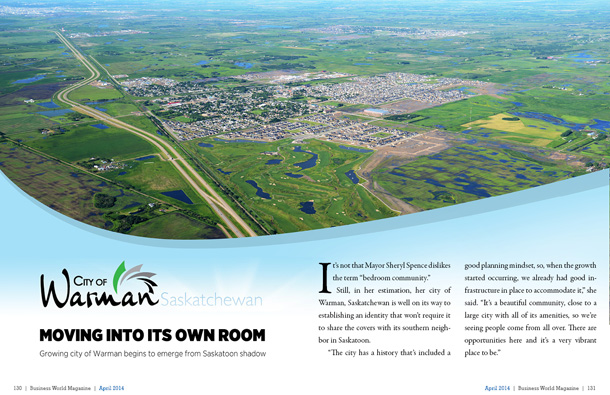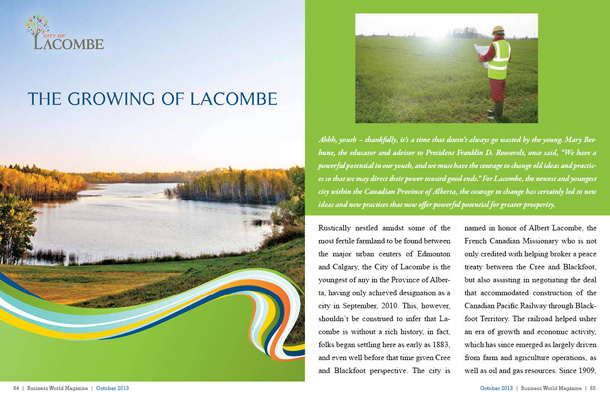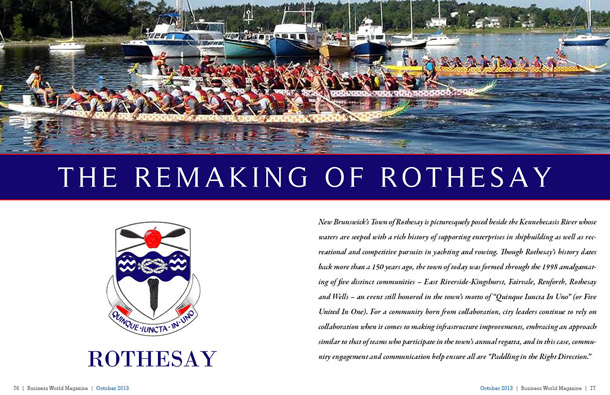
Building the future for 20 years
 One of the running gags on the American television series The Simpsons is that they are very vague about the actual location of Springfield, which is the series fictional setting. It is a joke but at the same time a comment. Springfield is supposed to represent Everytown America, seeing that there are 28 cities in the United States alone that bear the name. It is everywhere and nowhere. Greater Springfield is almost the antithesis of this: it has been very firmly placed on the map, and many people want to live there. Greater Springfield, located in South East Queensland, is the largest planned city in Australia, and it is also one of the most successful Having received numerous awards since its inception, last year Greater Springfield was awarded the World’s Best Master-Planned Community by the International Real Estate Federation (FIABCI).
One of the running gags on the American television series The Simpsons is that they are very vague about the actual location of Springfield, which is the series fictional setting. It is a joke but at the same time a comment. Springfield is supposed to represent Everytown America, seeing that there are 28 cities in the United States alone that bear the name. It is everywhere and nowhere. Greater Springfield is almost the antithesis of this: it has been very firmly placed on the map, and many people want to live there. Greater Springfield, located in South East Queensland, is the largest planned city in Australia, and it is also one of the most successful Having received numerous awards since its inception, last year Greater Springfield was awarded the World’s Best Master-Planned Community by the International Real Estate Federation (FIABCI).
Greater Springfield is a city which now spans six suburbs, and is home to more than 21,000 residents. By 2030 the equivalent population of the city is estimated at 105,000, which is comparable to the size of Darwin. It was founded when business partners Maha Sinnathamby and Bob Sharpless formed the Springfield Land Corporation, in order to realise a vision, one that they are hoping that many will begin to share. “The Corporation is the developer of the Greater Springfield project, and is a private company,” says Sharpless. “The company was created to do the Greater Springfield Project, when we contracted to purchase the land in 1991.” Prior to that date he says that they had completed extensive studies on the potential of the land, and eventually took possession of it on 19th August 1992. This means that they are coming up on their 20th operational year, although the germination of the idea reached much farther back.
“We really started the development in the 12 months prior to settling on the land, and we have completed about 20 to 25 per cent of the project so far in this first 20 years.” He laughs at the suggestion that means it will take a hundred years to complete the project. “We certainly hope not, we expect to have the project completed by 2031. This is the same timeline used by the South East Regional Queensland Planning guide which is used by the Government. This might sound a bit challenging if you have a straight line approach to these types of projects, but the experience of building a master planned community is a bit different. They go through a pattern where they seem to get through 20 to 25 per cent of the project in the first half of the project life, and if you think about it that is a fairly logical thing to do given all the problems you have to deal with in getting started,” says Sharpless. These challenges include the planning approval stages, building the infrastructure in order to service the planned community, and the marketing required to develop the brand.
“The marketing is important because you really want to let people buy into your vision.” Sharpless believes vision, hard work, and determination have carried the project this far. “You get to a tipping point where people are able to come out and touch it, and then they are more comfortable with the project as long as it has gone through all those early stages and they know it is not going to fall over.” This is the stage they see themselves at now, and one where they might be ready to “turbo charge” their development. “You tend to have built a lot of momentum, and have activity going on multiple developments and on multiple fronts,” he says. These multiple facets of the development process have all been focused on three pillars. Education, Healthcare, and Information Technology.
The Vision
“The vision we started with was that we wanted to create a satellite city on the edge of Brisbane, but when we went about trying to sell the idea, many people had a hard time understanding what it meant.” It wasn’t that they could not picture it; it was the size and scope of the project. “We knew from very early on what we wanted and when we saw the potential of the land, we knew that we had a great opportunity,” says Sharpless. The land that they are working with in Greater Springfield is unconstrained, whereas many projects in the past have been much smaller, and forced to become compact. “Working in these smaller areas ultimately requires compromise on the part of those developing the project,” he says. With the 2860 hectares of land that represents this project, they were able to develop a detailed plan that included space to grow and develop vibrant evolving communities and business centres.
“When we set out the master plan of the project we always had the intention of having a number of residential precincts – or neighbourhoods – and a major town centre. From a residential perspective we have opportunities for all home buyers – whether that is first home owners, or people looking for executive golf-course frontage homes on Queensland’s number one golf course in our prestigious Brookwater community. We have 390 hectares of land set aside for our town centre, which we now call the CBD,” says Sharpless. This business and commercial centre is part of their plan to make the living city a different experience. Sharpless says that one point of difference is that they are laying the foundations for a working culture that will see an influx of people to their planned community during the work week, rather than the reverse. According to Sharpless, Greater Springfield will be a destination, not a bedroom neighbourhood. “This will of course create jobs for those living in the community, but it will also create vibrancy and promote the utilisation of the infrastructure that we are putting in,” he says.
Education as a precursor to vitality
“To create both employment and industry we identified a number of drivers that would lead to this, the first was education. We had a fairly innovative agreement with the State Government, where the school sites on the project would be given to them for free,” he says. The catch for the State was that they had to match their development with that of the Greater Springfield Land Corporation’s time table. “Traditionally what happens is that the population is already there to support the schools, and you don’t get any real value from the school being there when it comes to developing the residential area,” he says. Greater Springfield has taken the reverse outlook, and sees their educational assets as an important stepping stone in developing their residential holdings. “Education is where we started off, and now we have a range of schools both public and private – and all forms of education right from tertiary, where we have the University of Southern Queensland, trade schools, right down to your child care and pre-school. Education has been highly successful for us and we have a much higher proportion of schools than any other area of Australia that we know of.”
Information driven
The other driver that they have focused on is Information Technology and creating the technological infrastructure in order to support it. “We were the first developer in Australia to set up an ACOT School, which was an Apple Classroom Of Tomorrow. That was back in the mid 1990s, when Apple was very involved in providing computers for education,” says Sharpless, this initiative, of course also ties into their focus on education, but at the time was truly a technological marvel.
“We had people very interested in providing the connectivity piece, and we set up the dial up the Springfield Intranet,” he says. This was very innovative for the time, and predated much of the World Wide Web, allowing people to be interconnected before it was the common reality that it is today. Sharpless says that this was a major step in community building, and also demonstrates the forward thinking that they have dealt with in all aspects of the development process. Although the technology became redundant with the advent of large scale adoption of the internet, Greater Springfield had created the infrastructure to house the ever expanding needs of a more and more information driven population and commercial sector. “It demonstrated very early on our interest in the technology and that we were going to have technology as one of the advantages of living here in Greater Springfield,” he says. It was a way of attracting business into the community by providing this infrastructure and we knew that this would entice entrepreneurs and early adopters into the city. “The Apple school got a lot of attention at the time, but importantly it got us started on this IT journey,” he reiterates.
As they moved on from their project with Apple they became the first developers to begin installing fibre optic cables throughout their entire development. “Back in the late 1990s and early 2000s we were installing fibre optic cables as a trial with Telstra, and then we ended up building our own dark fibre network from Brisbane to Springfield, which was built in 2006,” he says. This network is now beginning expansion into the other residential areas throughout the development. Sharpless points out that what many companies are trying to do now with the dark fibre networks is something they started doing almost six years ago. The infrastructure that they created also includes a large data centre called the Polaris Data Centre, which means that there is no wasted space in office buildings that are otherwise required to house their own data centres. A centralised operation means that buildings can operate more efficiently, save space, and alternatively save money on cooling systems. Centralised data centres are only now being adopted industry wide, and again Springfield saw the trend before the rest of the world. This also means that the day to day operations of any corporate building is substantially greener than they would be otherwise.
“IT was a platform that we embraced very early on, and we wanted to promote the project as a digital city, and we have had a lot of collaboration with people in that space,” says Sharpless. “NEC and Pipe Networks are here helping us with some of the work we are doing, as is Opticom, helping us roll out some of the fibre for us. You attract companies that are in that business and want to play in that space.” With the forward thinking aspects of the project that is Greater Springfield, many companies and institutions are seeing the opportunity that it represents as a proving ground for many new developments and ideas. Sharpless describes their push to become a “digital city” but a more appropriate term might be “a big idea city”.
Healing the centre
Health is the third pillar that is currently under development. Sharpless says that they are in the beginning stages of this portion of the project, but it had long been established as one of the development goals. In this they have combined the other two tiers of their development plan. “We are just ready to get started on seeing some buildings. We have allocated a major part of the project – 52 hectares – for a project called Health City, and again it is designed to be a large integrated hospital where you have all forms of healthcare in one spot,” he says. This will also mean that from an infrastructure standpoint, those living and working in the city will have an easier time of accessing the facilities and services. “It is directly opposite Education City which is where we have the university, and obviously people will study there, and at its core Health City will have a tertiary hospital, with other health and wellness practitioners surrounding it.” Retirement and aged care will also be addressed in this area, making families who are moving here much more able to manage extended relatives, or remain close to family members when they reach retirement age. They have also put aside areas for drug companies to set up research facilities and offices – it is all about integration of services and creating a vibrant working culture. “We have the space for a fairly large health hub, and we are not constrained by land, and we have the land available to do things better,” he says. They have developed this model by visiting other similar projects around the world and gone to some of the leading consultants in the world to advise them on the best practices for them. This means that they have also gained the experience of others while at the same time becoming industry innovators. “Harvard Medical International was involved in the planning and the direction we should be looking at on the Health City Project,” he says. More recently they have entered into a strategic alliance with Mater Health Services, who will be the major providers of medical services within the project.
Parts of the whole
Greater Springfield also focuses on the traditional drivers, such as retail, and commercial developments. “People need to shop and work,” Sharpless says matter-of-factly. In order to do that they have to have what he calls the “fifth pillar” of their operation: public transport. “We set aside the corridors within the project for transport, including public transport, and importantly we have rail coming to Greater Springfield in June 2013.” He says having this high speed transport line creates the ability for people to move in and out of the project. Again he stresses they hope to see people coming into the area to work, and not the reverse. “It will also help us in developing office accommodation because workers are looking for low cost commuting,” he adds. The project is already well underway with rail already to Richards, with the next stage looking to complete the circuit to Brisbane. “The contract has been awarded, and the work started, there are two stations in this stage one is at Springfield Lakes, and the other Springfield Central – which is of course the suburb name of our CBD,” he says.
Getting there, and sharing the vision
The industry awards that they have received over the course of the project have acted to reaffirm that not only are they on the right path, but that they are being recognised for the innovative ways in which they are travelling that path. Sharpless says that to truly understand their vision and what they have accomplished one really needs to set foot on their big spot of land and see it with their own eyes. He has said that before they had put shovel to earth, they had a hard time convincing people of the scope of their idea. But now that they can, as he says, “feel it, reach out and touch it”, it might be a harder task to convince people how short a time the development has had to accomplished all it has. Sharpless invites all that are curious, those thinking of making Greater Springfield city their home or place of business, to visit. He is sure they will not be disappointed.







